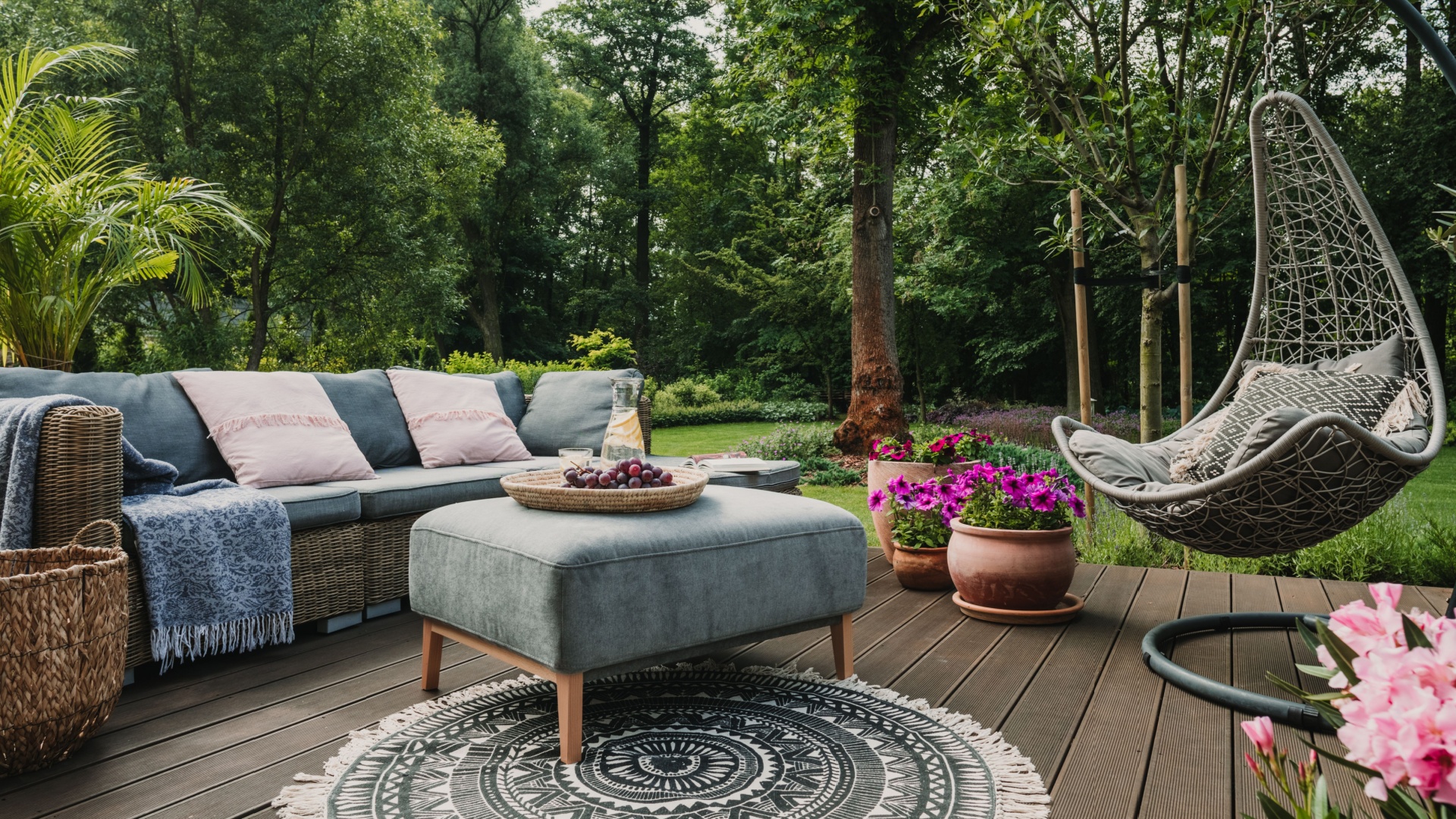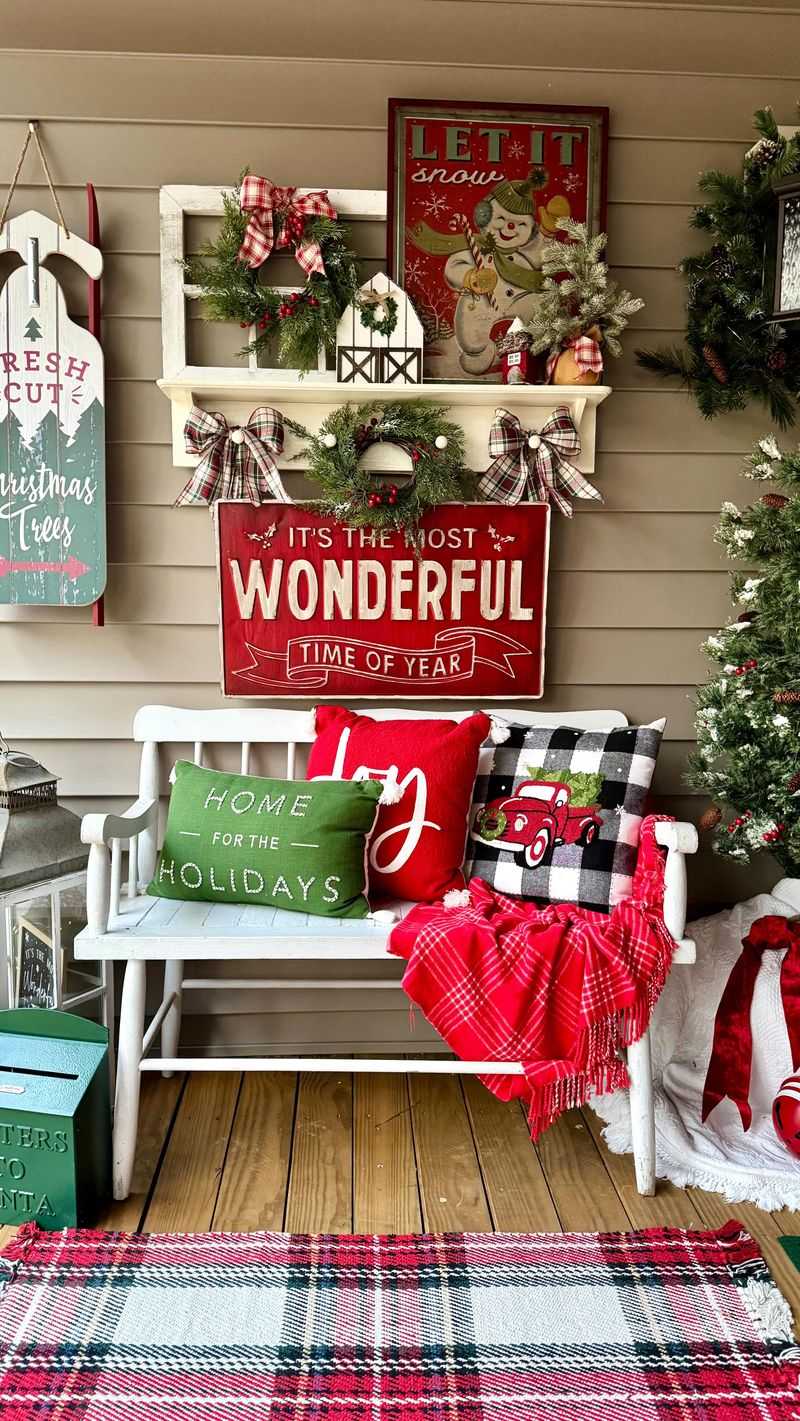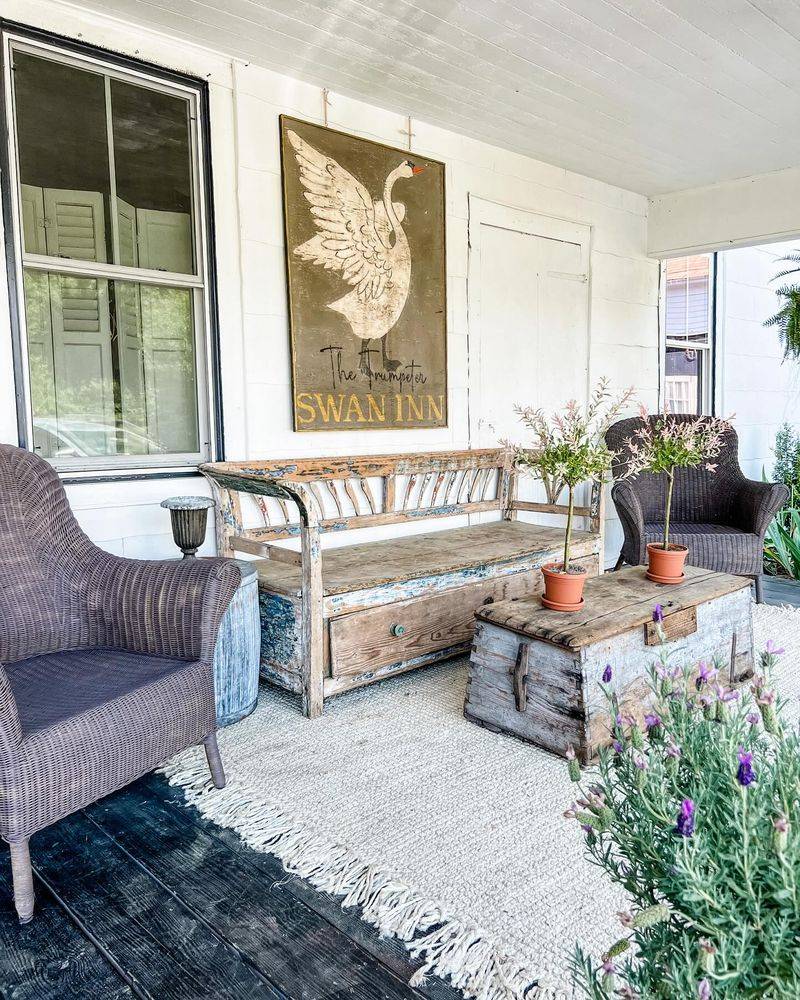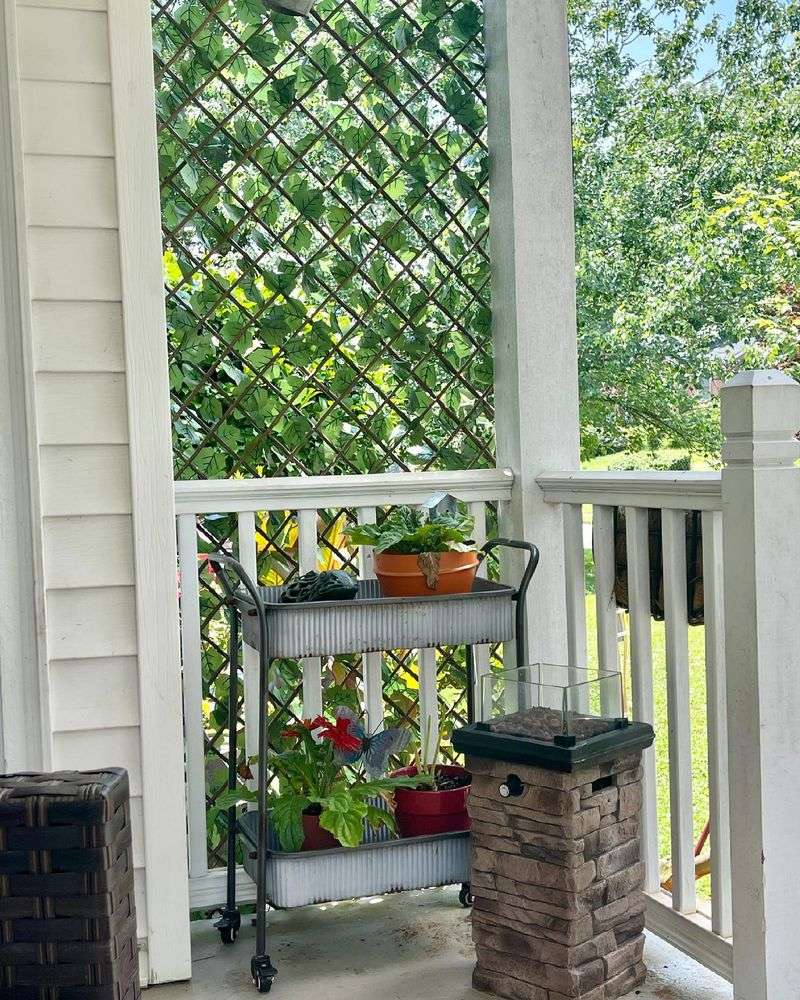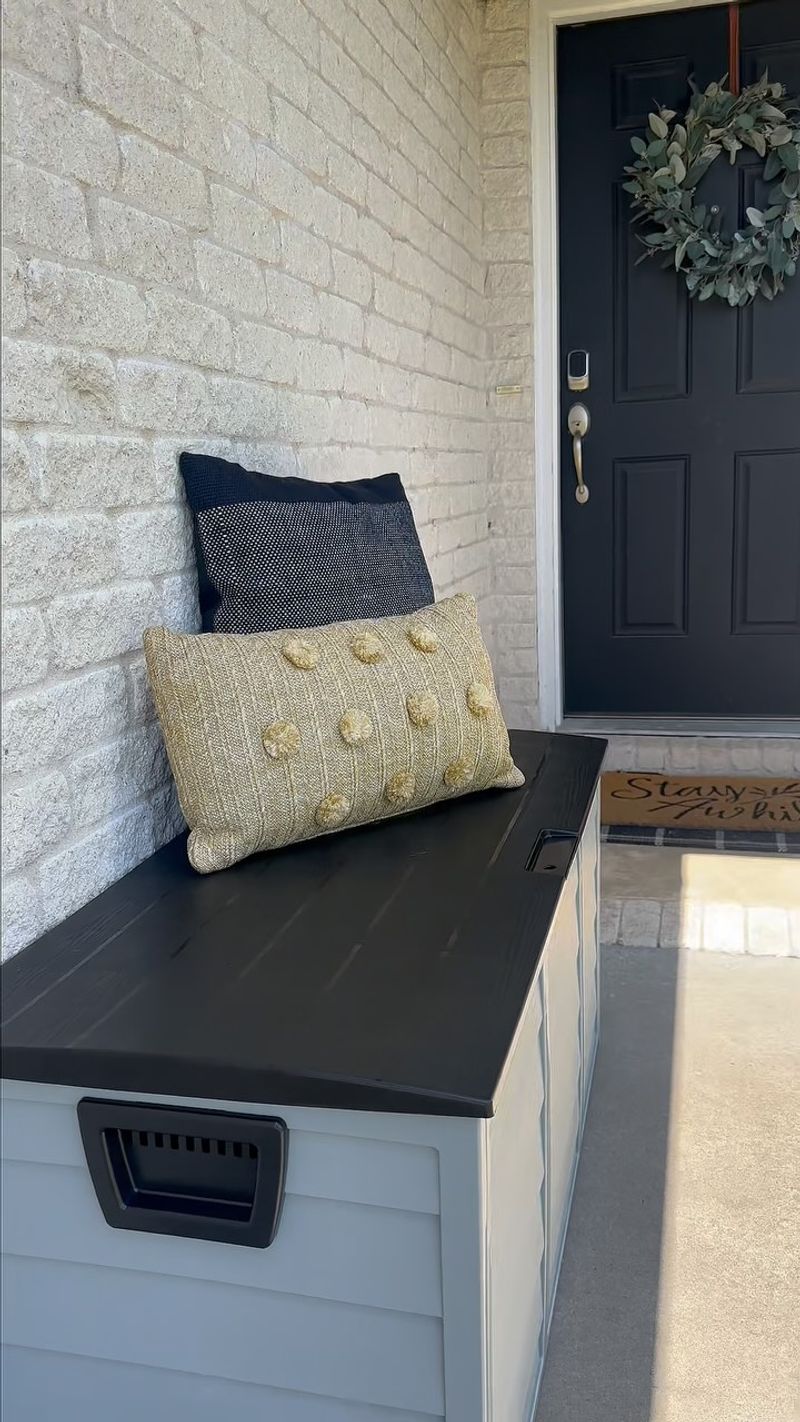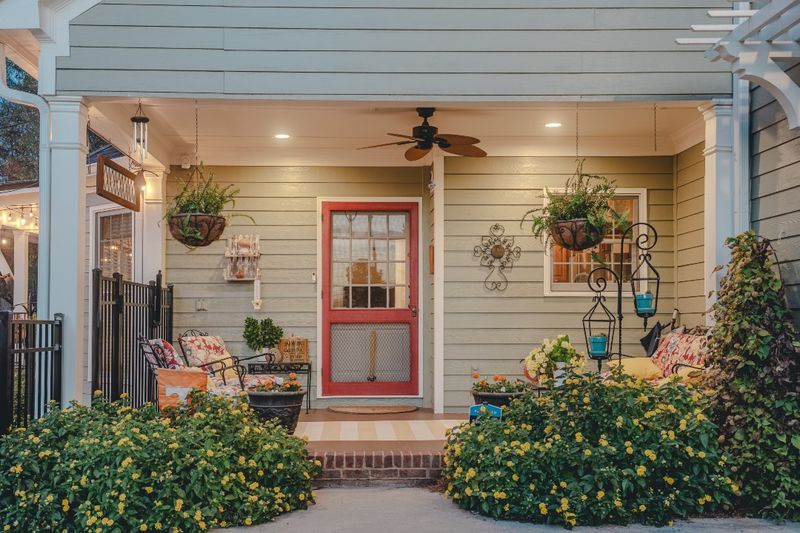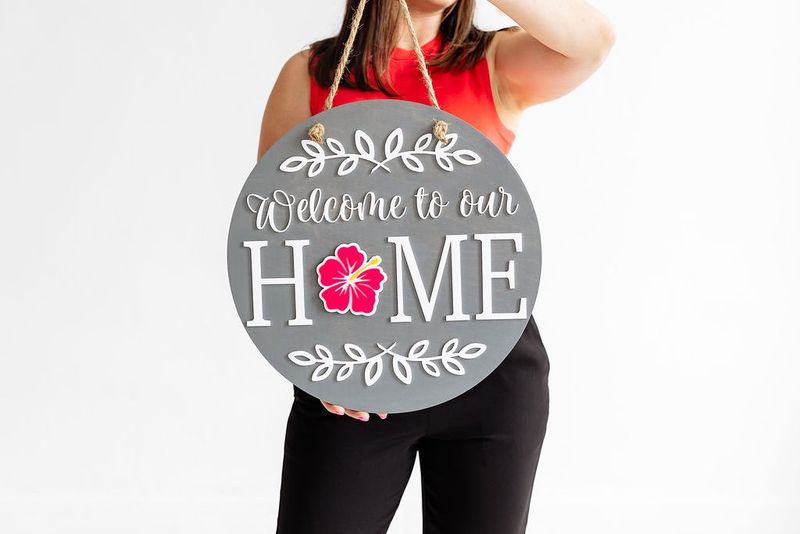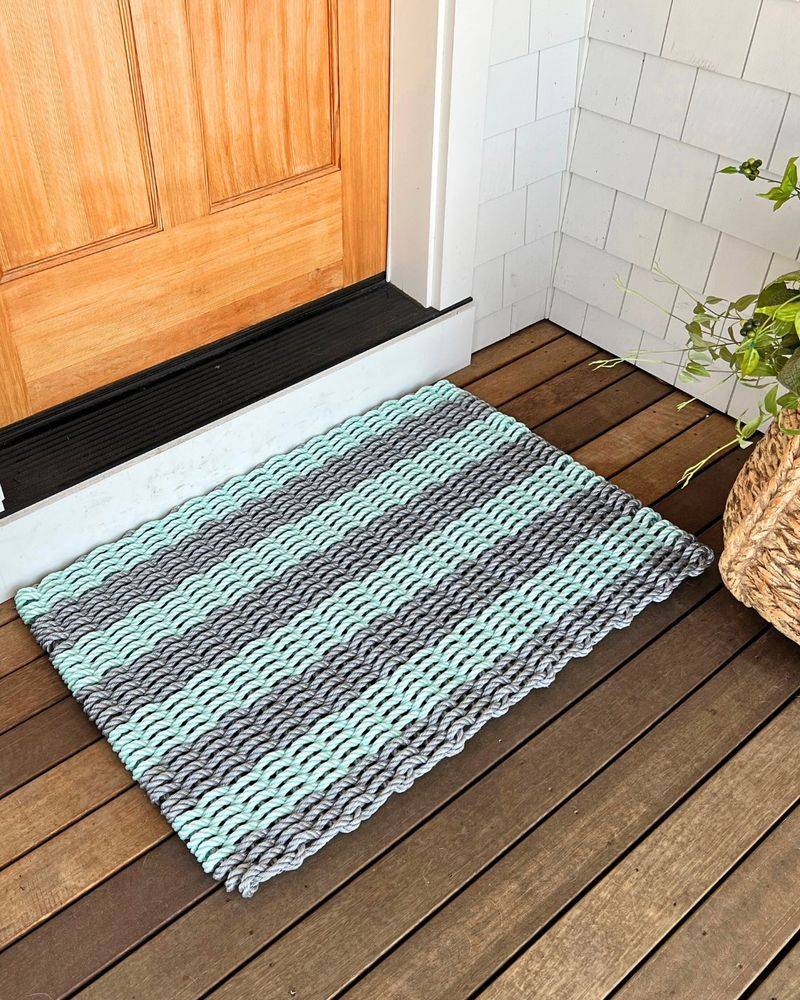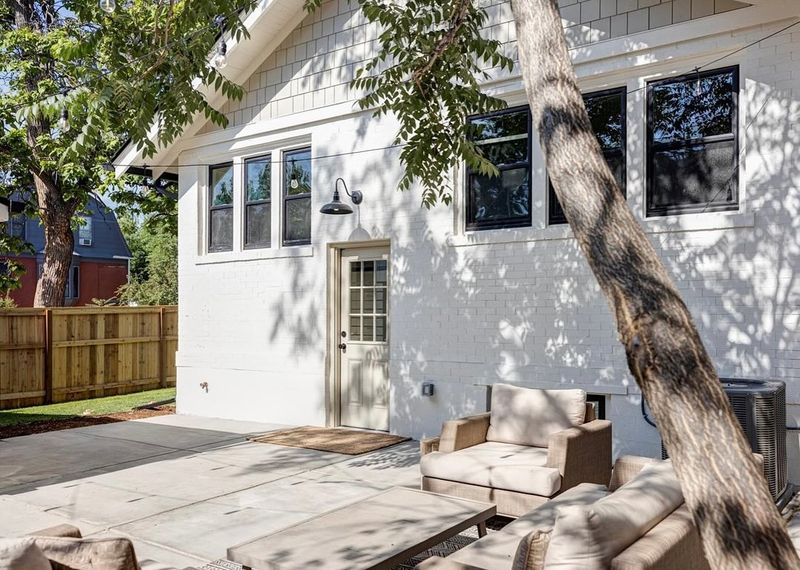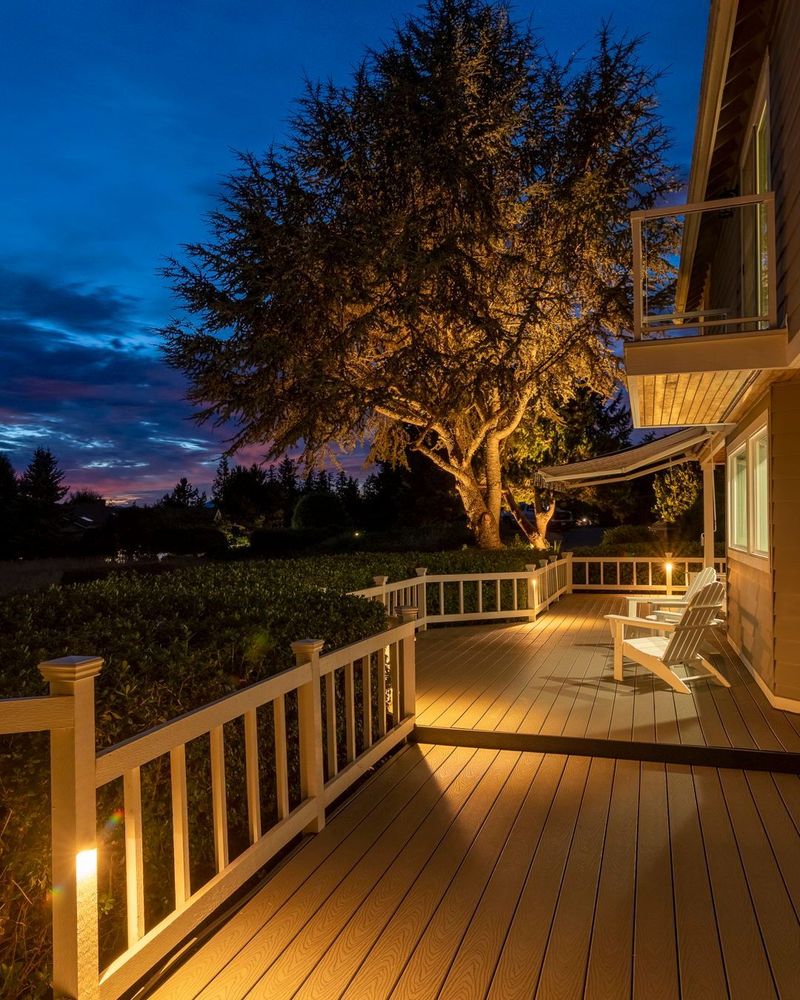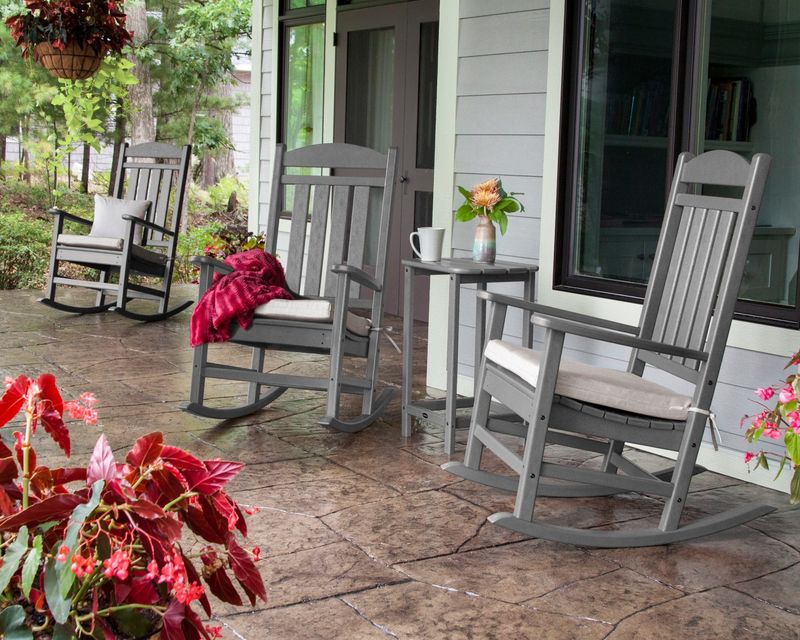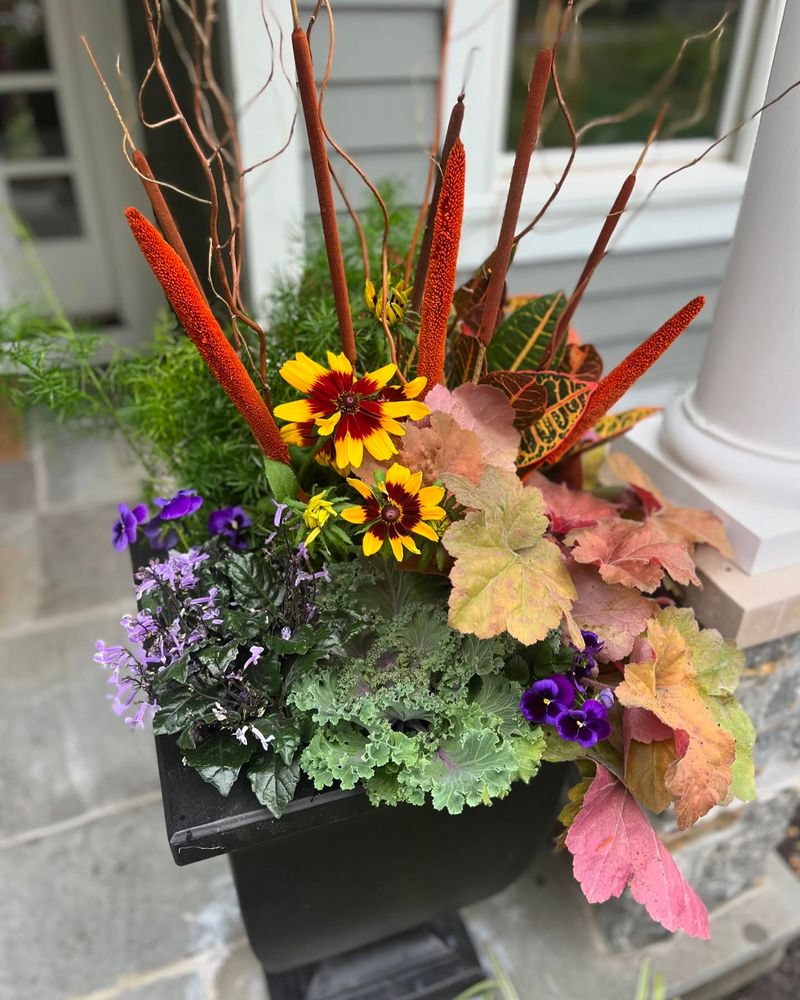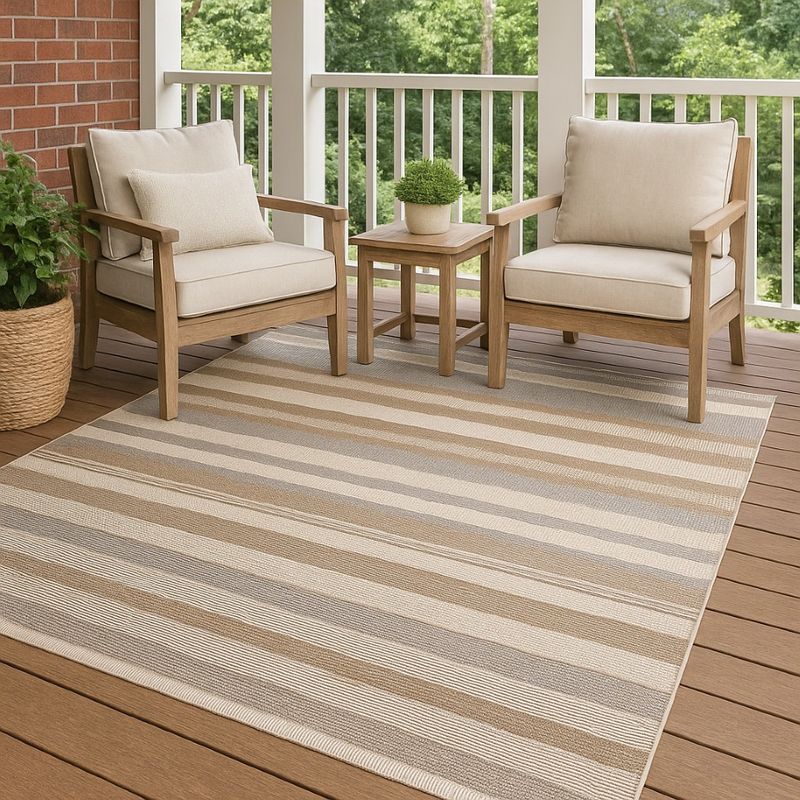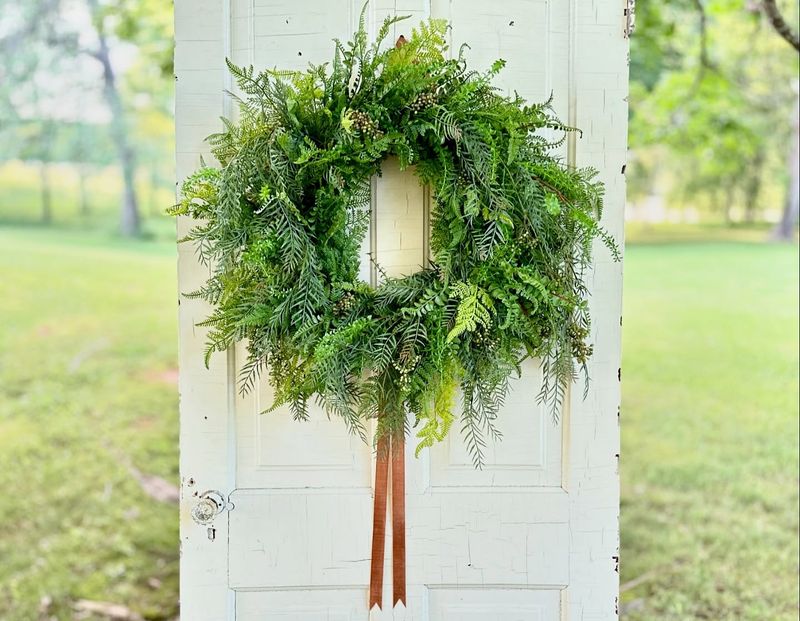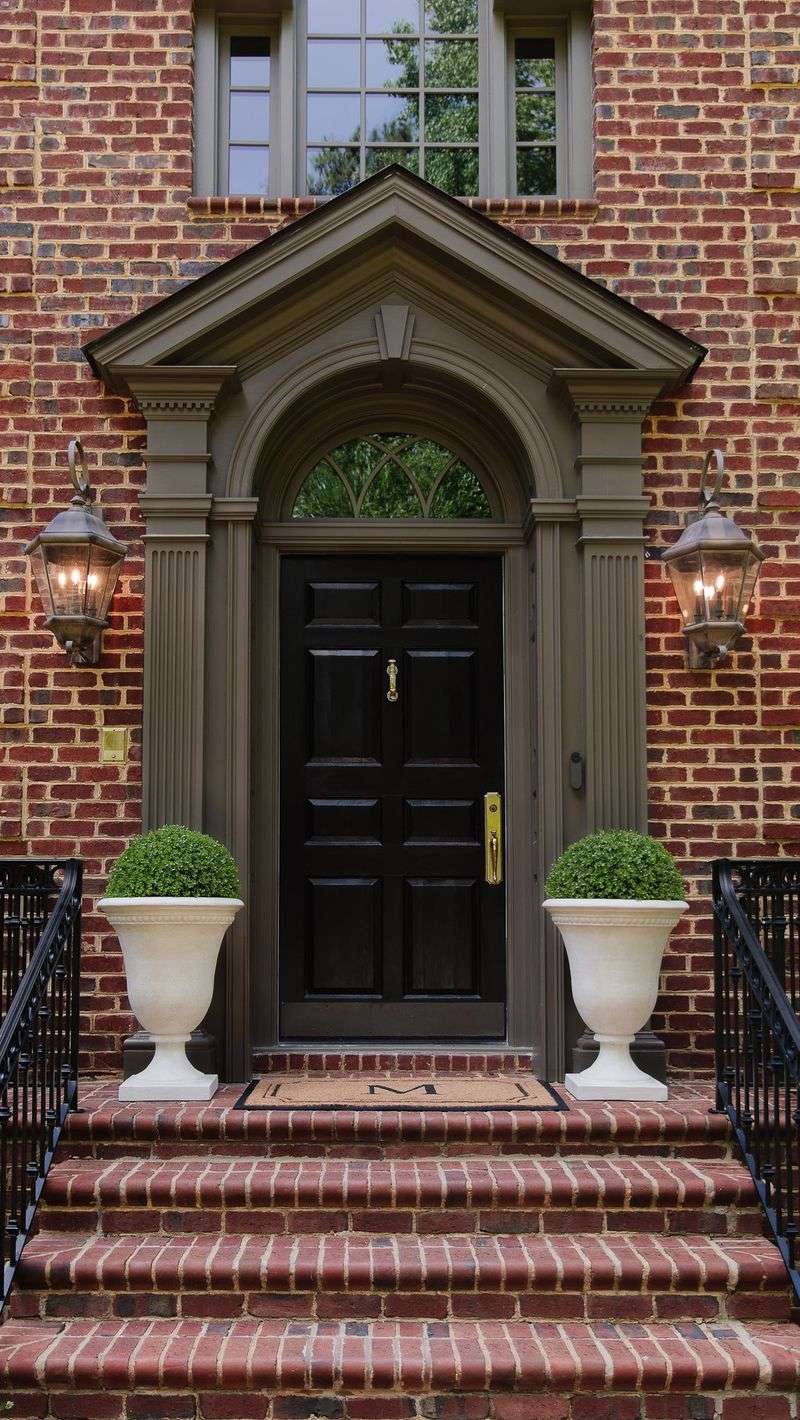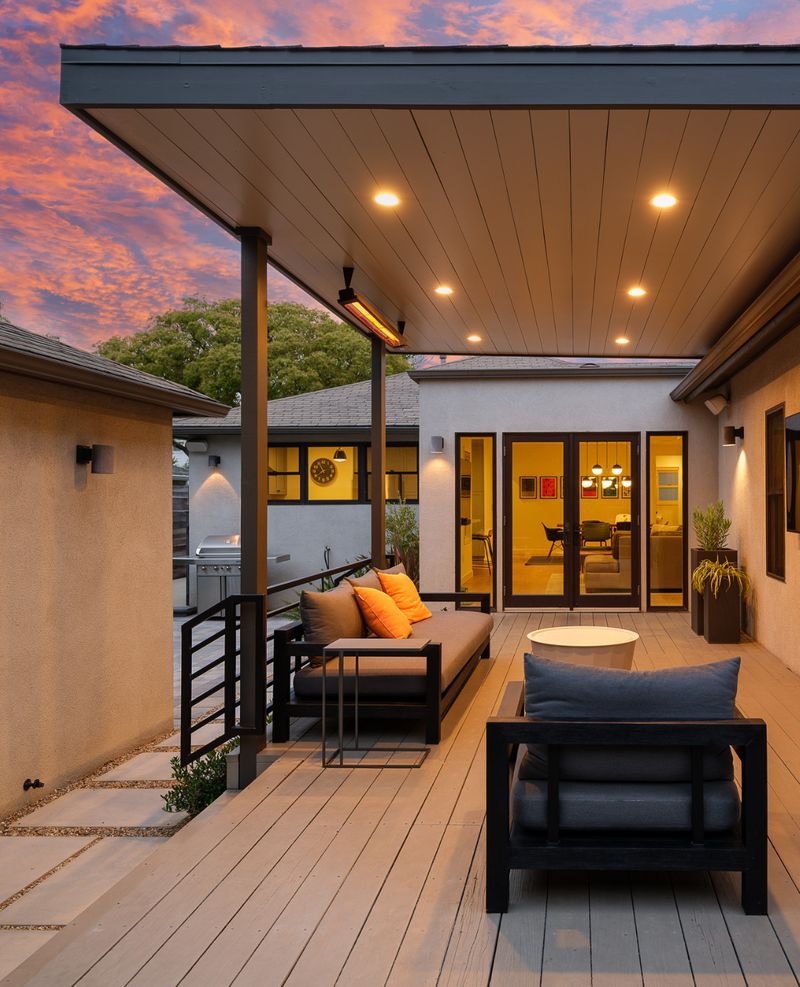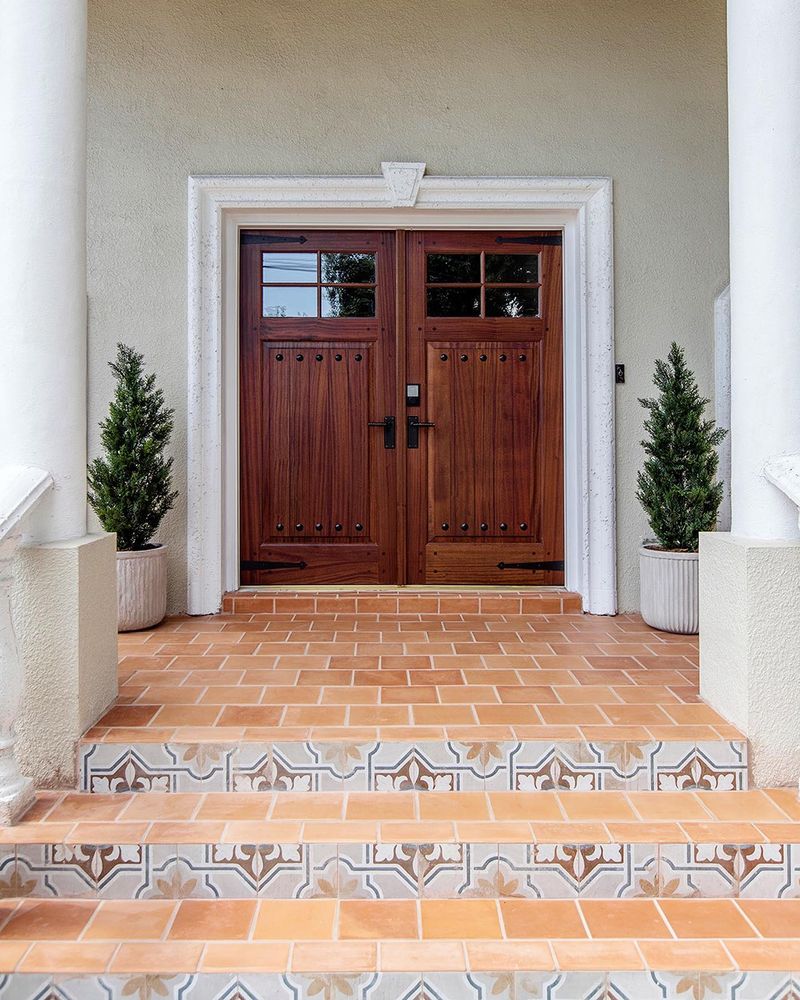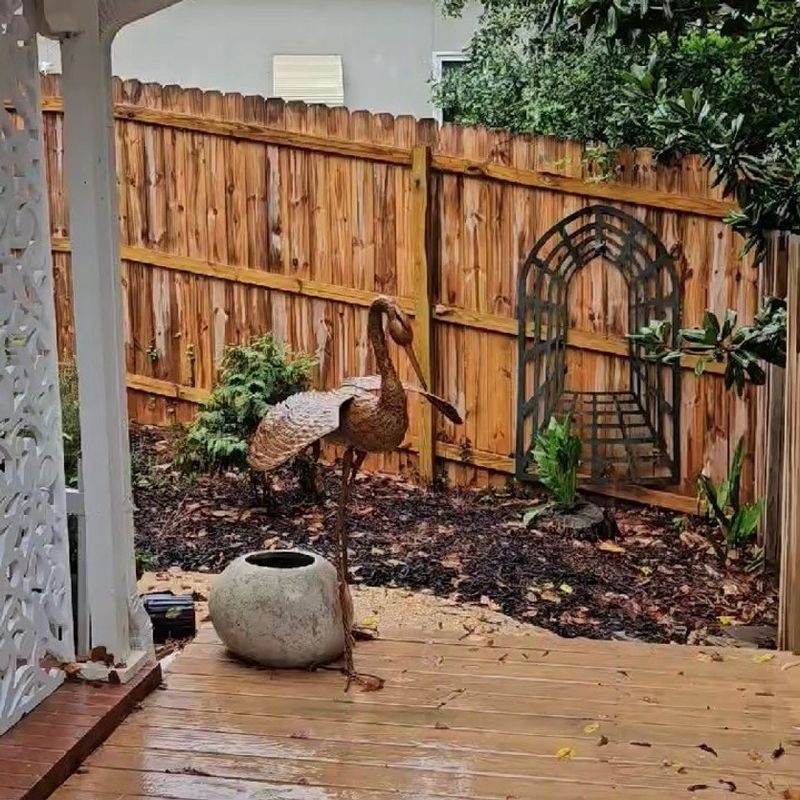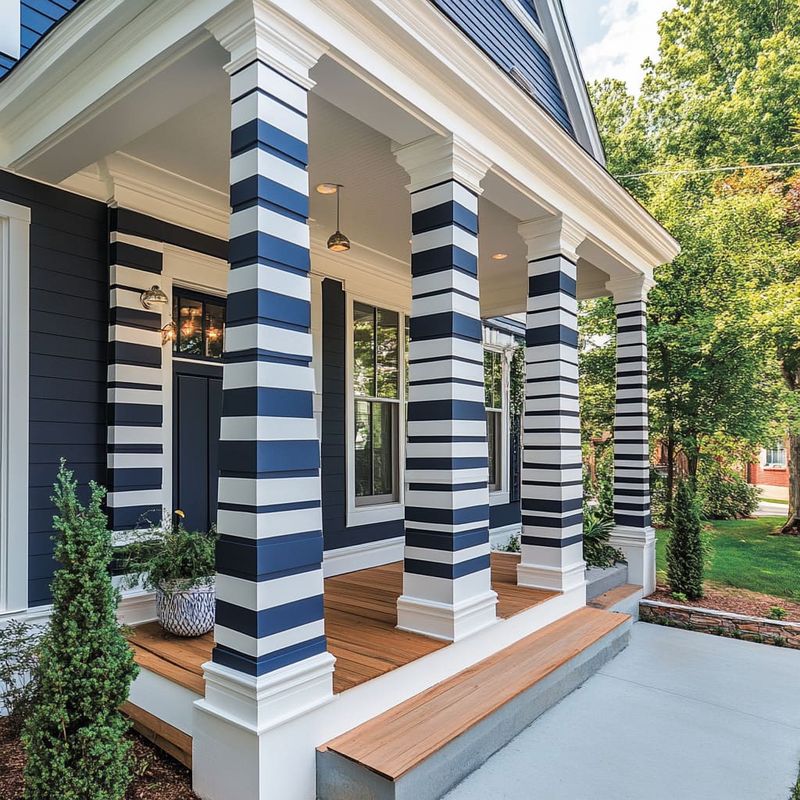Your porch sets the tone—it’s your home’s handshake, not a storage shed or garage sale overflow. But even the best-intentioned décor can send the wrong message if it’s out of place, overdone, or just plain tired.
Designers have seen it all, and they’re not shy about what belongs (and what definitely doesn’t) out front. From curb appeal killers to style boosters, here’s the definitive do-not list—and the items that earn a warm welcome.
1. Never: Plastic Flamingos
Once a quirky statement piece, plastic flamingos have fallen from grace in the design world. Professional decorators now view these pink birds as outdated kitsch that cheapens your home’s exterior aesthetic.
Consider the message these mass-produced decorations send: they suggest a lack of originality and attention to detail. Modern designers recommend investing in quality outdoor art pieces that reflect your personal style instead of following dated trends.
2. Never: Excessive Holiday Decorations
Holiday spirit is wonderful, but forgotten decorations from seasons past create an impression of neglect. That deflated Santa in April or Halloween cobwebs in January tell passersby you don’t maintain your property.
Designers recommend a disciplined approach to seasonal decor with a strict timeline for removal. When decorations stay up too long, they lose their special quality and become eyesores. Timely decoration changes show you care about your home’s appearance year-round.
3. Never: Broken Furniture
Cracked plastic chairs, wobbly tables, or furniture with peeling paint immediately communicate neglect to visitors and passersby. That three-legged chair you’ve been meaning to fix broadcasts that maintenance isn’t a priority.
Designers emphasize that broken furniture isn’t just an eyesore—it’s potentially dangerous. Investing in quality, weather-resistant pieces pays dividends in both appearance and longevity. If your budget is tight, fewer well-maintained items create a better impression than numerous damaged pieces.
4. Never: Artificial Plants
Faded, dusty fake flowers fool no one and cheapen your porch’s appearance. Designers particularly dislike low-quality artificial plants that quickly deteriorate in outdoor conditions, collecting grime and spider webs.
The synthetic materials often clash with the natural outdoor setting, creating a jarring visual disconnect. Even high-end faux plants eventually succumb to sun damage and discoloration. Real plants, whether flowering or green, bring authentic life and seasonal change to your porch that no imitation can match.
5. Never: Cluttered Storage
Your porch isn’t a storage unit, yet many homeowners treat it as one. Kids’ toys, sports equipment, and random household overflow create a chaotic first impression that diminishes your home’s appeal.
Professional designers stress that visible clutter suggests your interior spaces may be equally disorganized. Dedicated storage solutions like decorative boxes or benches with hidden compartments can help maintain a clean appearance. Remember that your porch serves as your home’s handshake—make it confident and uncluttered.
6. Never: Mismatched Design Elements
A collection of unrelated decorative items creates visual confusion rather than harmony. That Southwestern pottery beside Victorian-inspired lighting fixtures and tropical-themed pillows looks random rather than curated.
Designers recommend choosing a cohesive style that complements your home’s architecture. This doesn’t mean everything must match perfectly, but items should relate through color, material, or design language. A thoughtful theme transforms scattered objects into a purposeful arrangement that enhances your home’s character.
7. Never: Excessive Signage
Those mass-produced “Live, Laugh, Love” and “Welcome Friends” signs have saturated the market to the point of becoming design clichés. Professional decorators wince at porches overcrowded with generic inspirational phrases and cutesy sayings.
Quality over quantity applies here—one thoughtfully chosen, perhaps custom-made sign makes a stronger statement than multiple generic ones. If you love displaying text, designers suggest focusing on pieces with personal meaning or artistic merit rather than shopping mall sentiments.
8. Never: Worn-Out Welcome Mats
Frayed, faded, or dirty welcome mats contradict their intended message of hospitality. That threadbare mat with barely legible text suggests neglect rather than thoughtful maintenance.
Designers point out that this small item makes a disproportionately large impression since visitors interact with it directly. A quality mat in good condition shows attention to detail and genuine care for visitors’ experience. Consider seasonal replacements to keep this high-traffic item fresh and functional.
9. Never: Exposed Utility Items
Garden hoses, electrical cords, and garbage bins create an unintentionally industrial look that detracts from your porch’s appeal. These functional necessities broadcast a maintenance area rather than a welcoming entrance.
Designers recommend creative concealment strategies like decorative hose holders or strategic plantings. Even small utility items like bug zappers or weathered thermometers can undermine an otherwise thoughtful design. The goal is a space that appears curated rather than merely functional.
10. Never: Overgrown Plants
Neglected plants with dead leaves, empty planters with just soil, or overgrown vines blocking walkways create an abandoned rather than inviting impression. That struggling fern dropping leaves on your welcome mat isn’t doing your curb appeal any favors.
Designers emphasize that healthy plants signal a well-maintained home, while neglected greenery suggests overall property neglect. Choose plants suited to your porch’s light conditions and your maintenance capacity. A few thriving plants create a better impression than numerous struggling ones.
11. Never: Poor Lighting Choices
Harsh, buzzing fluorescent fixtures or dim, insufficient lighting create an unwelcoming atmosphere that can even pose safety concerns. Outdated light fixtures that clash with your home’s architecture immediately date your property.
Lighting designers recommend layered illumination that combines ambient, task, and accent lighting for both function and atmosphere. Modern options like solar-powered fixtures or smart lighting systems offer flexibility without complex installation. Remember that lighting sets the mood for evening arrivals and departures.
12. Should: Weather-Resistant Comfortable Seating
Inviting chairs that withstand the elements transform your porch from a passageway into a destination. Materials like teak, polywood, or quality resin wicker maintain their appearance despite seasonal changes.
Designers recommend arranging seating to facilitate conversation rather than just lining furniture against walls. Adding weather-resistant cushions in colors that complement your home’s exterior creates cohesion. Your seating arrangement should suggest relaxation and connection—a visual invitation to pause and enjoy the outdoors.
13. Should: Seasonal Potted Plants
Living greenery brings color, texture, and natural beauty to your porch while demonstrating attentive maintenance. Rotating seasonal blooms—spring tulips, summer petunias, fall mums, and winter evergreens—shows engagement with your property throughout the year.
Professional designers recommend grouping containers of varying heights for visual interest. Consider your home’s color palette when selecting both plants and containers for a cohesive look. Even in winter, structural plants like ornamental grasses or dwarf conifers maintain visual appeal.
14. Should: Quality Outdoor Rug
A weather-resistant rug anchors your porch design while adding color, pattern, and texture. Modern outdoor rugs resist fading, mildew, and staining while bringing indoor comfort to exterior spaces.
Designers recommend selecting a size proportional to your porch—too small appears disconnected while too large overwhelms. Consider patterns that complement rather than compete with your home’s exterior features. A quality outdoor rug ties disparate furniture pieces together, creating a cohesive outdoor room feel.
15. Should: Tasteful Seasonal Wreaths
A carefully chosen wreath adds personality without overwhelming your entrance. Unlike permanent decorations that become background noise, seasonal wreaths signal attentiveness to your home’s presentation throughout the year.
Designers favor natural materials and subtle seasonal references over cartoonish holiday characters. A spring wreath with preserved eucalyptus, summer’s lavender and wheat, fall’s preserved leaves, or winter’s evergreen branches each create appropriate seasonal transitions. This simple addition refreshes your entrance with minimal effort.
16. Should: Appropriate Scale Planters
Substantial planters proportional to your porch size create architectural presence and frame your entrance effectively. Undersized pots appear temporary and insignificant, while oversized ones can overwhelm smaller spaces.
Professional designers often recommend symmetrical arrangements for traditional homes and asymmetrical groupings for more contemporary styles. Materials should complement your home’s exterior—ceramic or terracotta for Mediterranean styles, cast stone for traditional homes, or sleek fiberglass for modern architecture. Quality planters represent an investment that elevates your entire porch appearance.
17. Should: Layered Lighting
Strategic lighting transforms your porch from merely functional to genuinely inviting after sunset. Combining overhead fixtures, wall sconces, and accent lighting creates depth and atmosphere while enhancing safety.
Lighting designers recommend warm-toned bulbs (2700-3000K) that flatter both people and architecture. Consider fixtures that direct light downward to reduce glare and light pollution. Smart options that adjust automatically at sunset ensure your porch remains welcoming regardless of when guests arrive.
18. Should: Architectural Door Hardware
Quality door hardware functions as jewelry for your entrance, elevating the entire porch aesthetic. A substantial handleset, knocker, or distinctive house numbers in materials like aged brass, bronze, or matte black create a custom, upscale appearance.
Designers recommend selecting hardware appropriate to your home’s architectural style—sleek and minimal for modern homes, ornate for Victorian styles. This relatively small investment yields significant visual impact. Coordinating all metal elements (lighting, hardware, mailbox) in the same finish family creates a thoughtfully designed impression.
19. Should: Weather-Protected Art
Outdoor-rated artwork adds personality while demonstrating attention to detail beyond basic necessities. Metal sculptures, weather-resistant prints, or mosaic elements introduce color and visual interest unique to your home.
Design professionals suggest selecting pieces that complement your architecture rather than competing with it. Consider the viewing angles—both from the street and for those seated on the porch. Art that incorporates movement, like kinetic sculptures or wind chimes, adds sensory dimension beyond the purely visual.
20. Should: Unified Color Scheme
A thoughtful color palette that extends from your home’s exterior to porch furnishings creates visual harmony and intentional design. Professional decorators often work with a limited palette of 3-5 colors for maximum impact without visual chaos.
Consider drawing accent colors from your landscaping or architectural details for natural cohesion. Even neutral porches benefit from carefully considered tones—warm beiges versus cool grays create distinctly different atmospheres. This attention to color relationships transforms random elements into a curated composition.

